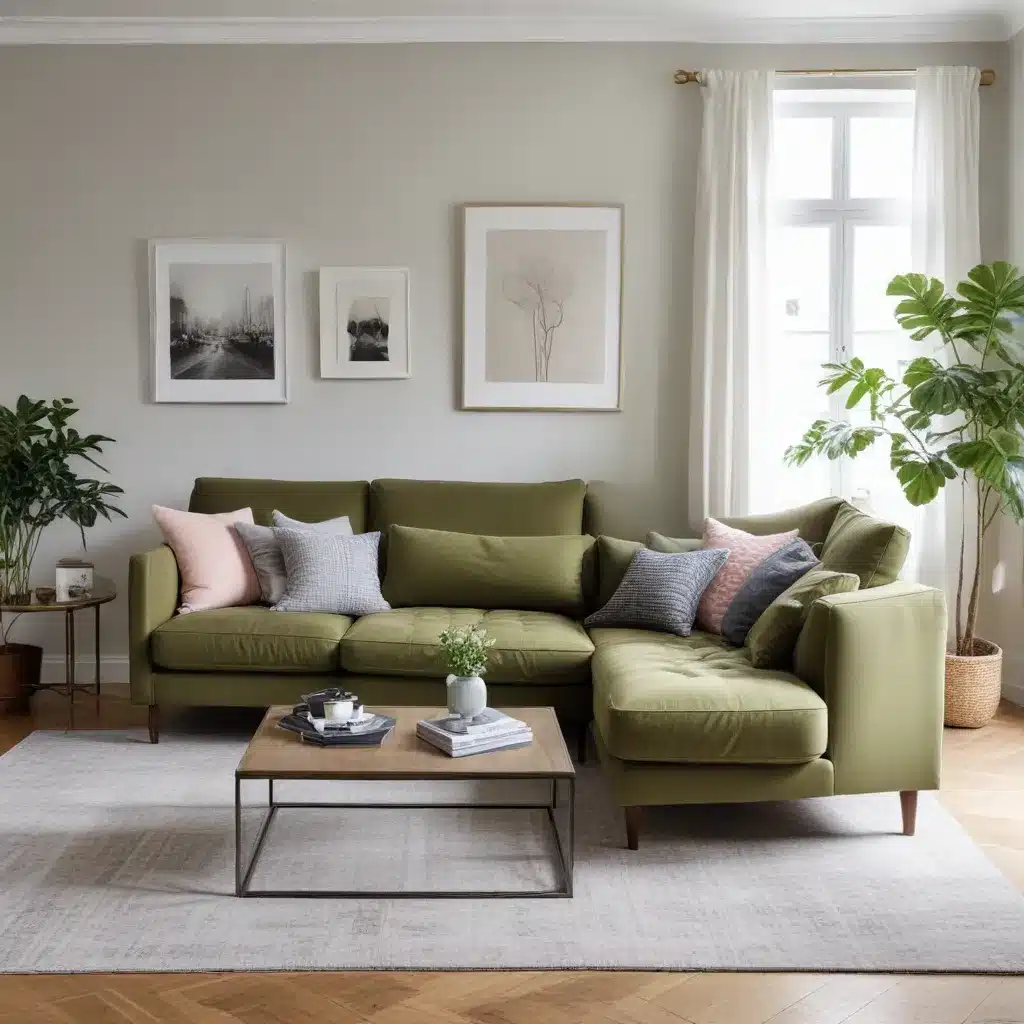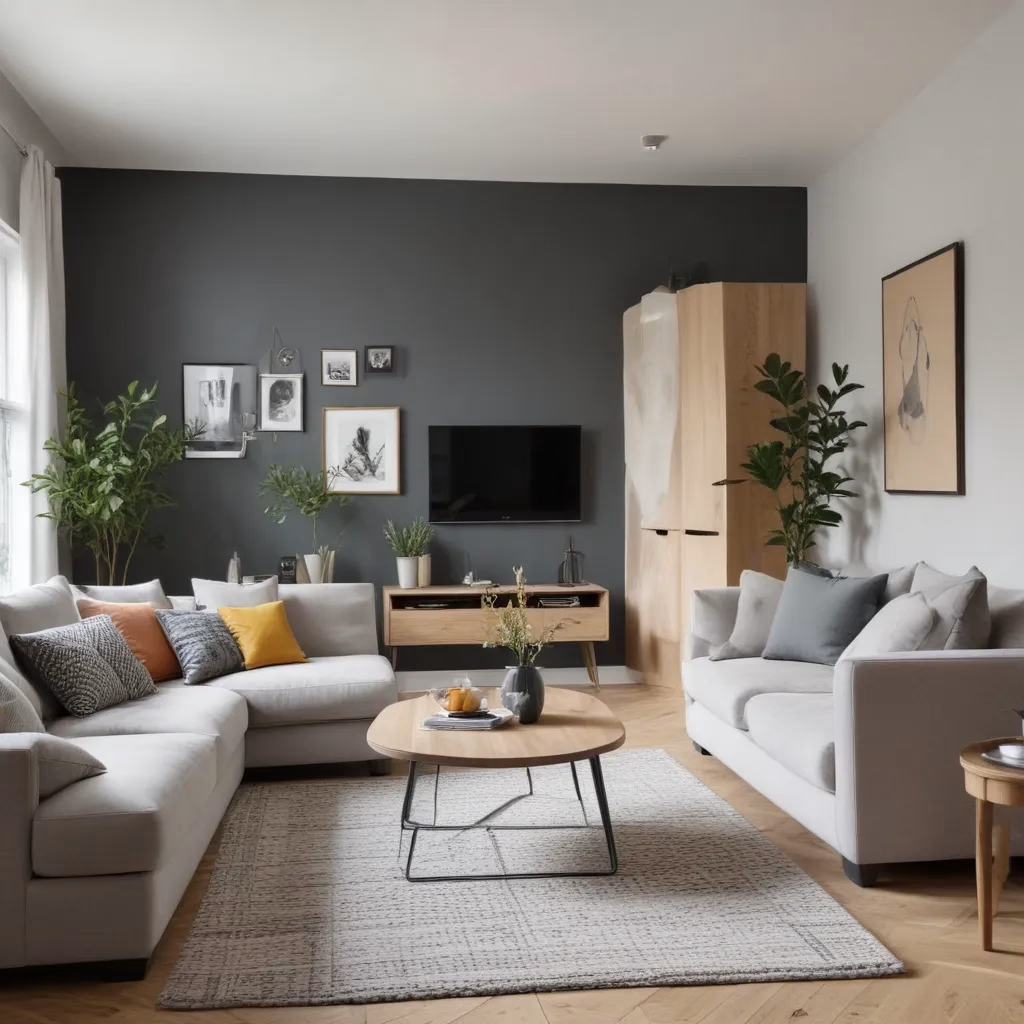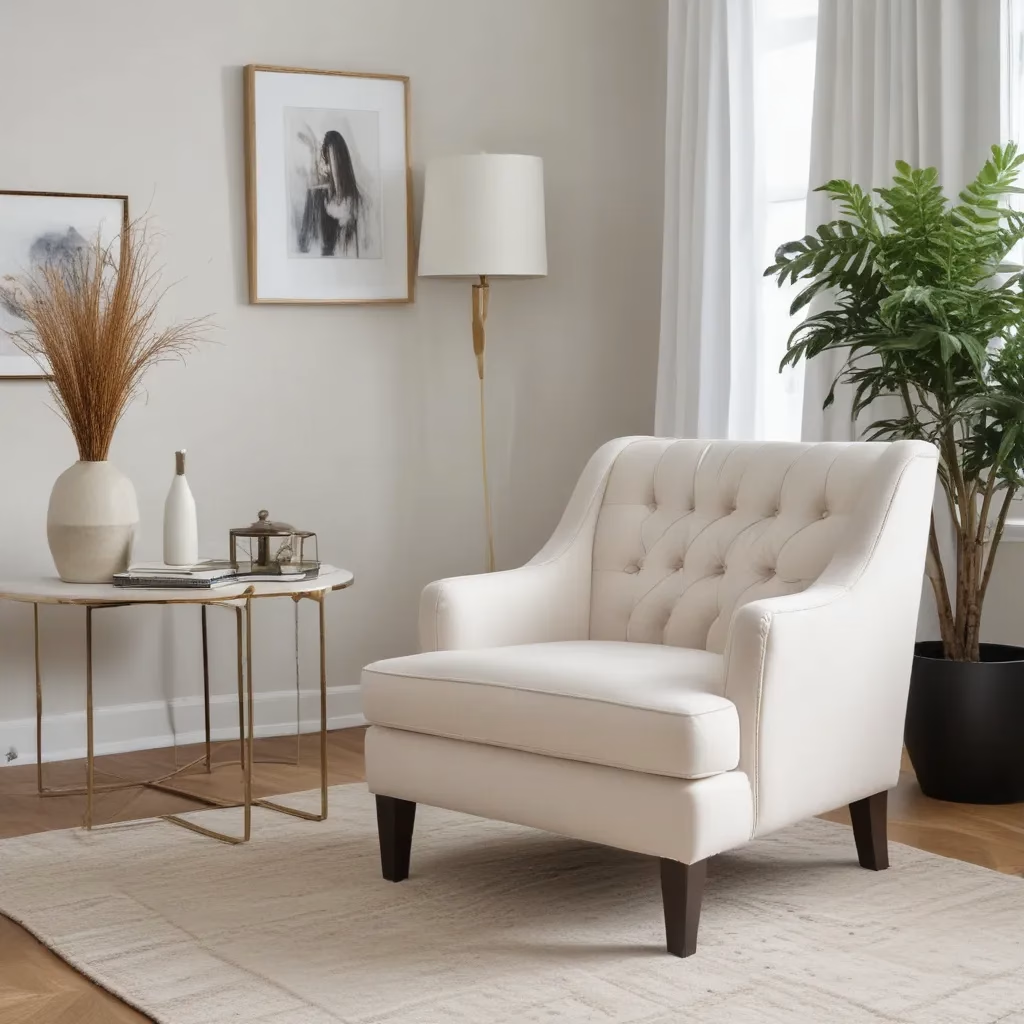
Understanding the Importance of Sofa Placement
As a furniture specialist with years of experience, I’ve seen firsthand how the placement of a sofa can make or break a living room’s ambiance. It’s not just about finding a spot where the sofa fits; it’s about creating a harmonious flow that enhances both functionality and aesthetics.
When I first started in this industry, I underestimated the impact of sofa placement. I remember walking into a client’s home and being struck by how disconnected their beautiful leather sectional felt from the rest of the space. It was pushed against the wall, creating an awkward void in the center of the room. That experience was a turning point for me, highlighting the need to consider sofa placement as a crucial element of interior design.
Over the years, I’ve learned that the right sofa placement can transform a room from ordinary to extraordinary. It sets the tone for the entire space, influences traffic flow, and even affects how people interact within the room. Whether you’re working with a cozy apartment or a spacious living area, the principles of effective sofa placement remain the same. Let’s explore how you can elevate your living room design through strategic sofa positioning.
Assessing Your Living Room Layout
Before you start moving furniture around, it’s essential to take a step back and assess your living room layout. I always advise my clients to begin with a blank canvas – mentally, if not physically. Consider the room’s dimensions, architectural features, and natural light sources. These factors will play a significant role in determining the optimal position for your sofa.
Start by identifying the focal point of your room. This could be a fireplace, a large window with a view, or even a statement piece of art. Your sofa should be positioned to complement this focal point, not compete with it. For instance, in a room with a stunning fireplace, I often recommend placing the sofa facing or perpendicular to it, creating a natural conversation area.
Next, think about traffic flow. You want to create clear pathways that allow people to move easily through the space without obstacles. I’ve seen too many living rooms where guests have to awkwardly maneuver around furniture to reach their seat. A well-placed sofa should enhance the room’s flow, not hinder it.
Lastly, consider the other furniture pieces in your room. Your sofa doesn’t exist in isolation; it needs to work in harmony with your coffee table, chairs, and side tables. I like to think of furniture arrangement as a puzzle where each piece has its perfect spot.
The Golden Rules of Sofa Placement
Through my experience, I’ve developed what I call the “Golden Rules” of sofa placement. These guidelines have served me well across various projects and can help you achieve a balanced and inviting living room layout.
-
Create Conversation Areas: Position your sofa to encourage interaction. I often recommend a U-shaped or L-shaped arrangement, with the sofa as the anchor piece. This setup naturally draws people together and facilitates conversation.
-
Maintain Proper Distance: Ensure there’s enough space between the sofa and other furniture pieces. As a rule of thumb, I suggest leaving about 18 inches between the sofa and coffee table. This allows for comfortable leg room while keeping everything within easy reach.
-
Consider Scale: Your sofa should be proportional to the room size. In smaller spaces, I often recommend a loveseat or apartment-sized sofa to avoid overwhelming the room. Conversely, in larger rooms, a sectional or a pair of sofas might be more appropriate.
-
Balance with Other Elements: Don’t let your sofa dominate the space. Balance it with other furniture pieces and decor elements. For example, if you have a large sectional, consider using smaller accent chairs or a delicate coffee table to create visual balance.
-
Utilize Rugs: A well-placed rug can define your seating area and tie the room together. I always advise my clients to choose a rug large enough to accommodate all the furniture in the conversation area.
By following these golden rules, you’ll be well on your way to creating a living room layout that’s both functional and aesthetically pleasing.
Sofa Placement for Different Room Shapes
Every room presents unique challenges and opportunities when it comes to sofa placement. Let’s explore some common room shapes and how to make the most of them:
Square Rooms
Square rooms offer a symmetrical canvas, which can be both a blessing and a challenge. In these spaces, I often recommend floating the sofa away from the walls to create a more intimate seating area. This approach prevents the room from feeling boxy and allows for better traffic flow around the furniture.
One effective layout I’ve used in square rooms is to place the sofa perpendicular to the focal point, with a pair of chairs opposite it. This arrangement creates a balanced look and defines a clear conversation area within the larger space.
Rectangular Rooms
Long, narrow living rooms can be tricky to furnish. The key is to break up the space to prevent a bowling alley effect. I’ve had success dividing rectangular rooms into distinct zones – perhaps a conversation area at one end and a reading nook or workspace at the other.
In these rooms, consider placing your sofa perpendicular to the long wall, with additional seating facing it. This arrangement helps to visually widen the space and creates a more inviting atmosphere.
Open-Plan Spaces
Open-plan living areas present a unique challenge: how to define separate spaces without walls. Here, your sofa can act as a room divider. I often suggest placing the sofa with its back to the dining area or kitchen, effectively creating a visual boundary between living and eating spaces.
In open-plan layouts, don’t be afraid to float your furniture away from the walls. This can help to create a more cohesive and intimate seating area within the larger space.
Adapting Sofa Placement to Your Lifestyle
While there are general guidelines for sofa placement, it’s crucial to adapt these rules to fit your lifestyle and needs. I always encourage my clients to think about how they use their living room on a daily basis.
For families with young children, I might recommend a more open layout that allows for easy supervision and play space. In contrast, for a couple who loves to entertain, I might focus on creating multiple conversation areas with flexible seating options.
Consider your daily routines as well. If you enjoy watching TV in the evenings, ensure your sofa placement allows for comfortable viewing angles. For avid readers, I might suggest incorporating a chaise lounge or creating a cozy reading nook adjacent to the main seating area.
Remember, the goal is to create a living room that not only looks good but also functions well for your specific needs. Don’t be afraid to break the “rules” if it means creating a space that truly works for you.
The Impact of Lighting on Sofa Placement
Lighting plays a crucial role in sofa placement, yet it’s often overlooked. In my years of experience, I’ve learned that the right lighting can enhance your sofa’s position and create a more inviting atmosphere.
When placing your sofa, consider both natural and artificial light sources. If you have large windows, you might want to position the sofa to take advantage of the view while avoiding direct glare. I often recommend placing sofas perpendicular to windows to create a pleasant, naturally lit seating area.
For artificial lighting, think about how you’ll illuminate your seating area in the evenings. Table lamps on side tables or a floor lamp behind the sofa can provide warm, ambient lighting. I’m a fan of using multiple light sources at different heights to create a layered lighting effect, which adds depth and interest to the room.
Don’t forget about task lighting for activities like reading. A well-placed floor lamp next to the sofa can transform it into a cozy reading nook. In one project, I incorporated a sleek arc floor lamp that curved over the sofa, providing both style and functionality.
Sofa Placement and Room Acoustics
An often-overlooked aspect of sofa placement is its impact on room acoustics. The position of your sofa can affect how sound travels in the room, influencing everything from casual conversations to movie nights.
In rooms with hard surfaces like wooden floors or large windows, sound can bounce and create echoes. I’ve found that strategic sofa placement can help mitigate this issue. Placing the sofa away from walls and using soft furnishings like rugs and curtains can help absorb sound and create a more pleasant acoustic environment.
For homes where watching TV or listening to music is a priority, consider how the sofa’s position affects the sound quality. I often recommend placing the sofa at an optimal distance from speakers or the TV to ensure the best audio experience.
In open-plan spaces, sofa placement can also help create acoustic zones. By positioning the sofa to partially enclose a seating area, you can create a more intimate space for conversation, even within a larger room.
The Role of Color and Texture in Sofa Placement
While the physical position of your sofa is crucial, don’t underestimate the impact of color and texture on how the sofa integrates with your room. I’ve seen beautifully positioned sofas that still felt out of place due to clashing colors or mismatched textures.
When selecting a sofa, consider how its color and texture will interact with the rest of your room. A large, dark-colored sofa can anchor a room with lighter walls, while a brightly colored sofa can serve as a focal point in a more neutral space.
Texture also plays a significant role in how a sofa feels within a space. In a room with many smooth surfaces, a sofa with a rich, textured fabric can add depth and interest. Conversely, in a room with lots of textural elements, a sleek leather sofa might provide a nice contrast.
I often advise my clients to bring fabric swatches home before making a final decision. The lighting in your home can significantly affect how colors appear, and what looks great in a showroom might not work as well in your living room.
Sofa Placement for Small Spaces
Working with small spaces presents unique challenges, but with the right approach, you can create a functional and stylish living area. In my experience, the key to successful sofa placement in small rooms is to think creatively and prioritize functionality.
One strategy I often employ is using a loveseat or apartment-sized sofa instead of a full-sized one. These smaller pieces can provide comfortable seating without overwhelming the space. I remember working on a tiny studio apartment where we used a compact two-seater sofa that doubled as a guest bed, maximizing both seating and sleeping space.
Another trick for small spaces is to use multifunctional furniture. Sofas with built-in storage or those that can convert into beds are excellent options. I’ve had great success with modular sofas that can be rearranged to suit different needs – perfect for small homes that need to adapt to various activities.
Don’t be afraid to place your sofa at an angle in a small room. This can create the illusion of more space and add visual interest. In one project, we placed a small sofa diagonally in a corner, which opened up the center of the room and created a more dynamic layout.
The Importance of Negative Space in Sofa Placement
While it might be tempting to fill every inch of your living room with furniture, I’ve learned that negative space – the empty areas around and between objects – is crucial for creating a balanced and harmonious layout.
When placing your sofa, consider leaving some breathing room around it. This not only makes the room feel more spacious but also allows the sofa to stand out as a key piece. I often advise my clients to resist the urge to push all furniture against the walls, as this can make a room feel smaller and less inviting.
Negative space also plays a role in creating visual flow. By leaving clear pathways around your sofa, you make the room feel more open and easier to navigate. In one project, we transformed a cluttered living room by simply removing a few unnecessary pieces and repositioning the sofa to create more open space. The result was a room that felt significantly larger and more welcoming.
Remember, the goal is to create a balanced composition. Too much negative space can make a room feel empty and unfinished, while too little can make it feel crowded and chaotic. Finding the right balance is key to successful sofa placement.
Sofa Placement and Technology Integration
In today’s digital age, it’s important to consider how technology fits into your living room layout. Many of my clients are looking for ways to integrate their devices seamlessly into their seating arrangements.
When placing your sofa, think about access to power outlets for charging devices. I often recommend using side tables with built-in USB ports or discreet power strips to keep cables tidy and easily accessible.
For those who enjoy watching TV or gaming, consider the viewing angles when positioning your sofa. I typically suggest placing the sofa directly facing the TV for optimal viewing, but in rooms where this isn’t possible, angled arrangements can work well too.
In one recent project, we incorporated a smart home system into the living room design. This involved strategically placing the sofa to allow for easy control of lighting, sound, and temperature from a comfortable seated position.
The Evolution of Your Living Room: Adapting Sofa Placement Over Time
It’s important to remember that your living room is a dynamic space that will evolve over time. As your lifestyle changes, so too might your needs for the room. I always encourage my clients to be open to adjusting their sofa placement as needed.
For instance, a couple I worked with initially had their living room set up for intimate conversations and reading. When they had children, we rearranged the space to create more open areas for play while still maintaining a cozy seating area for adults.
Don’t be afraid to experiment with different layouts. I often suggest to my clients that they try moving their sofa to a new position for a week or two to see how it feels. Sometimes, a small change can make a big difference in how you use and enjoy your space.
Remember, the best sofa placement is one that works for you and your lifestyle. While guidelines and principles are helpful, ultimately, your comfort and enjoyment of the space are what matter most.
Conclusion: Creating Your Perfect Living Room Layout
As we’ve explored, sofa placement is both an art and a science. It requires a careful balance of aesthetic considerations, practical functionality, and personal preferences. By understanding the principles we’ve discussed – from creating conversation areas to considering lighting and acoustics – you’ll be well-equipped to create a living room layout that not only looks great but also enhances your daily life.
Remember, there’s no one-size-fits-all solution when it comes to sofa placement. Each room and each household is unique, with its own set of challenges and opportunities. The key is to approach your layout with a blend of creativity and practicality, always keeping in mind how you and your family will use the space.
As you embark on your own sofa placement journey, don’t be afraid to think outside the box and try new arrangements. And if you’re ever in doubt, remember that professional advice can be invaluable in helping you achieve your perfect living room layout.
With these insights and tips, you’re now ready to transform your living room into a space that’s not just visually appealing, but also perfectly tailored to your lifestyle and needs. Happy arranging!



